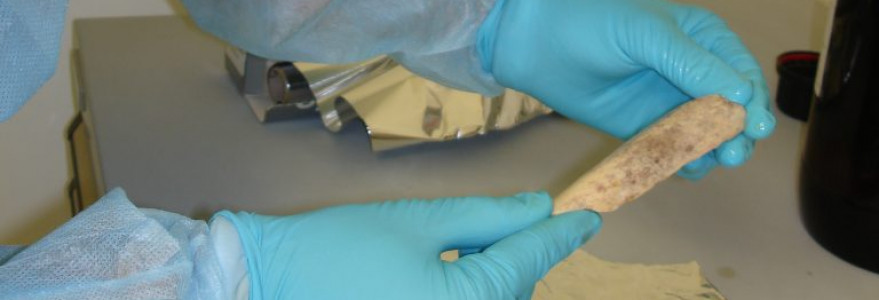Researchers from the Faculty of Archaeology at the University of Warsaw took part in an international project to determine the intensity and causes of human migration within the Roman Empire and its immediate vicinity. The results of the DNA research shedding new light on the history of European population in the first millennium AD were published in the “eLife” journal.
An international team of researchers coordinated by scientists from Stanford University, including Prof. Arkadiusz Sołtysiak and Prof. Tomasz Waliszewski from the Faculty of Archaeology, the University of Warsaw, investigated and determined the extent and consequences of migration within the Mediterranean basin and central Europe at the times of the Roman Empire. The findings of the research team were published in the “eLife” journal.
Ancient DNA
The Mediterranean, and later the more northerly areas of Europe, have been an area of intense migration over the past three millennia, driven by military conflict, trade or environmental factors. Until recently, researchers studying ancient populations and migration routes have relied on information provided by ancient written sources, linguistic analyses and material traces of archaeological cultures. The proliferation of ceramics, which was used to transport products indicated, for instance, an extensive network of contacts linking Rome or other important urban centres with centres of commodity production.
“Thanks to genetic research, we are able to add important information to this source base to better capture the movement of populations between the diverse populations that inhabited the Roman Empire,” Prof. Arkadiusz Sołtysiak says, adding, “This extraordinary political and economic organism covered the entire Mediterranean basin and a large part of Europe, exceeding the extent of today’s European Union in terms of area.”
Stable population of Europe
“The results of genetic research show the extraordinary diversity of populations inhabiting the ancient Mediterranean basin and Europe, but also their relatively high stability over the centuries,” Prof. Tomasz Waliszewski emphasises.
Conclusions from studies of ancient genomes allow the researchers to verify hypotheses constructed in past decades by historians and archaeologists. They pointed to the high level of mobility of people inhabiting the areas of ancient Mediterranean civilisations and the new centres of power and culture emerging on European territories. Such mobility resulted from the operability of individuals and communities, as well as from the opportunities created by such large and diverse political organisms as the Roman Empire and its heirs.
The team of researchers sequenced 204 new genomes from fifty-three archaeological sites in eighteen countries. The vast majority of the samples came from individuals buried during the peak of the Empire and its political heirs from the first to seventh centuries AD. At least 8% of the individuals were not natives of the areas in which they were buried. This relatively low rate compared to expectations suggests limited migration of people between regions at the time. The findings identify regions less prone to migration, such as mountain-bound Armenia, but also lands subject to increased population exchange during this period, such as Sardinia, the Balkans or some parts of Central and Western Europe.
Four of the genomes examined as part of the project were from human remains, discovered during research conducted by UW archaeologists in the ancient village of Chhim (read: Shheim) in present-day Lebanon. The research was conducted between 1996 and 2015 by the UW’s Polish Centre for Mediterranean Archaeology and the Institute (now Faculty) of Archaeology at the UW.
Publication details
Margaret L. Antonio, Clemens L. Weiß et al. (2024) Stable population structure in Europe since the Iron Age, despite high mobility, „eLife“ 13:e79714.



